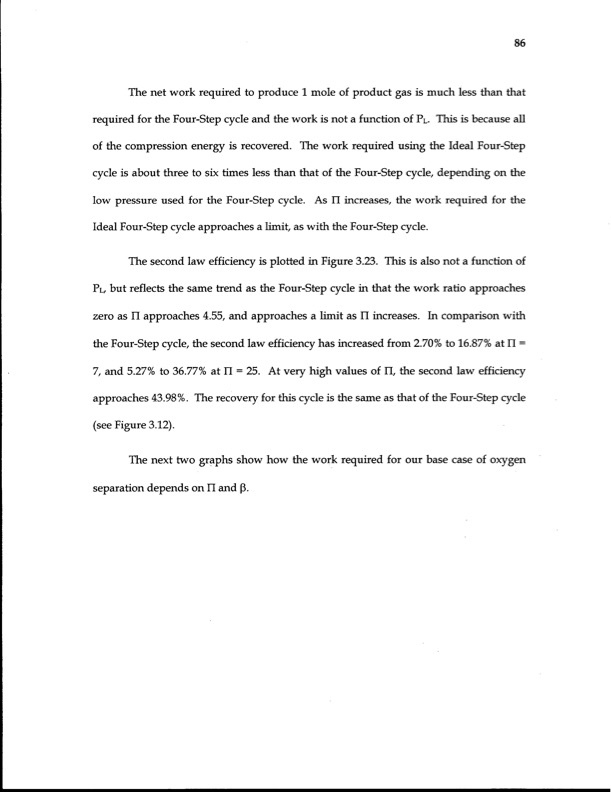
PDF Publication Title:
Text from PDF Page: 102
The net work required to produce 1 mole of product gas is much less than that required for the Four-Step cycle and the work is not a function of PL. This is because all of the compression energy is recovered. The work required using the Ideal Four-Step cycle is about three to six times less than that of the Four-Step cycle, depending on the low pressure used for the Four-Step cycle. As Fl increases, the work required for the Ideal Four-Step cycle approaches a limit, as with the Four-Step cycle. The second law efficiency is plotted in Figure 3.23. This is also not a function of PL, but reflects the same trend as the Four-Step cycle in that the work ratio approaches zero as n approaches 4.55, and approaches a limit as n increases. In comparison with the Four-Step cycle, the second law efficiency has increased from 2.70% to 16.87% at n = 7, and 5.27% to 36.77% at II = 25. At very high values of n, the second law efficiency approaches 43.98% . The recovery for this cycle is the same as that of the Four-Step cycle (see Figure 3.12). The next two graphs show how the work required for our base case of oxygen separation depends on n and p. 86PDF Image | Energy Efficiency of Gas Separation Pressure Swing Adsorption

PDF Search Title:
Energy Efficiency of Gas Separation Pressure Swing AdsorptionOriginal File Name Searched:
ubc_1997-0009.pdfDIY PDF Search: Google It | Yahoo | Bing
CO2 Organic Rankine Cycle Experimenter Platform The supercritical CO2 phase change system is both a heat pump and organic rankine cycle which can be used for those purposes and as a supercritical extractor for advanced subcritical and supercritical extraction technology. Uses include producing nanoparticles, precious metal CO2 extraction, lithium battery recycling, and other applications... More Info
Heat Pumps CO2 ORC Heat Pump System Platform More Info
| CONTACT TEL: 608-238-6001 Email: greg@infinityturbine.com | RSS | AMP |